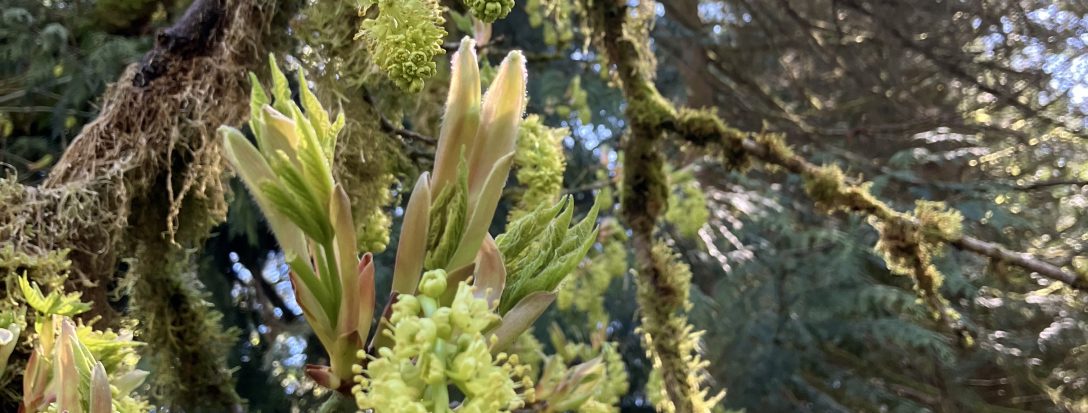
We’re back into fermentation fun here at EEC Forest Stewardship. Blackberry season was off the hook, and we took full advantage of this tenacious invasive bramble to harvest some sweetness. About 20 pounds of berries has gone into the pot with more sugar than I’d care to think about. That’s how you make alcohol with yeast, and we’re glad to get a handle on such simple chemistry to produce some home made drink to enjoy during the long dark nights of winter. It’s been a real challenge to get the chemistry right for best taste. For several years of attempts, I fought to keep the sugar inputs down, and ended up with fizzy juice rather than wine. Other years I’ve tried using only the natural yeast bloom on the fruit, but those experiments also came up short on taste. A recent almost success was kept in cask for 6 years before bottling. A wine expert friend suggested I put a little additional sugar in at bottling, which I did, and that batch was the best yet. Now, following a well reviewed recipe with simple steps of multiple sugar inputs and clear days of waiting between feeding the yeast and final racking, along with some added wine yeast has brought about two batches this year which I have high hopes for.

Blackberry wine is quite a straightforward process, yet its taken almost a decade to fully embrace all the steps and timing in a way to bring out the best success in the brewing process. The biggest challenge this year is temperature. Usually, September remains warmer, thus keeping the yeast active long enough to transform a good amount of the sugar intro alcohol. This fall, things are cooling off sooner than expected, and our fermentation has slown down considerably. The air locks on our carboys have stopped percolating, which signals the lack of fermentation. To counter this issue, we put a sweater on the jug and set it in the warm sun to heat up and start again. It’s working, so we solved that issue, but will probably freeze the berries next year and wait to ferment when the wood stove is going later in the fall. Temperature is so important in any brewing process, and without regulation, your future drinks may end up missing the spike intended. This is true for all fermentation, even food. A few years ago I tried making saki in the summer, not a great idea considering it was so hot out. We ended up with rice yogurt, which was yummy, but not a rice wine.

Fermentation is a great chemistry lesson, and fun way to preserve food. You don’t have to make alcohol, but it’s nice to have some home brew to enjoy and share with others if you drink. Fruit is a great starter in learning the brewing process, though beer kits are easy to find too. Because we don’t grow grains here at EEC, and blackberries are plentiful, wine makes the most sense. Just know there’s a lot of learning curve in perfecting your recipe and we’re still a long way from winning any accolades. However, this year’s batch is decent, good taste for great friends and family to enjoy a little flavor from our land. Gratitude to the bramble nation, the black fruit that comes on in later summer, and the hands that harvest and brew. Special shout out to chemistry, and the nature of fermentation- what an important gift.


Love it! And look forward to tasting the yummy end result! 🍷
LikeLike